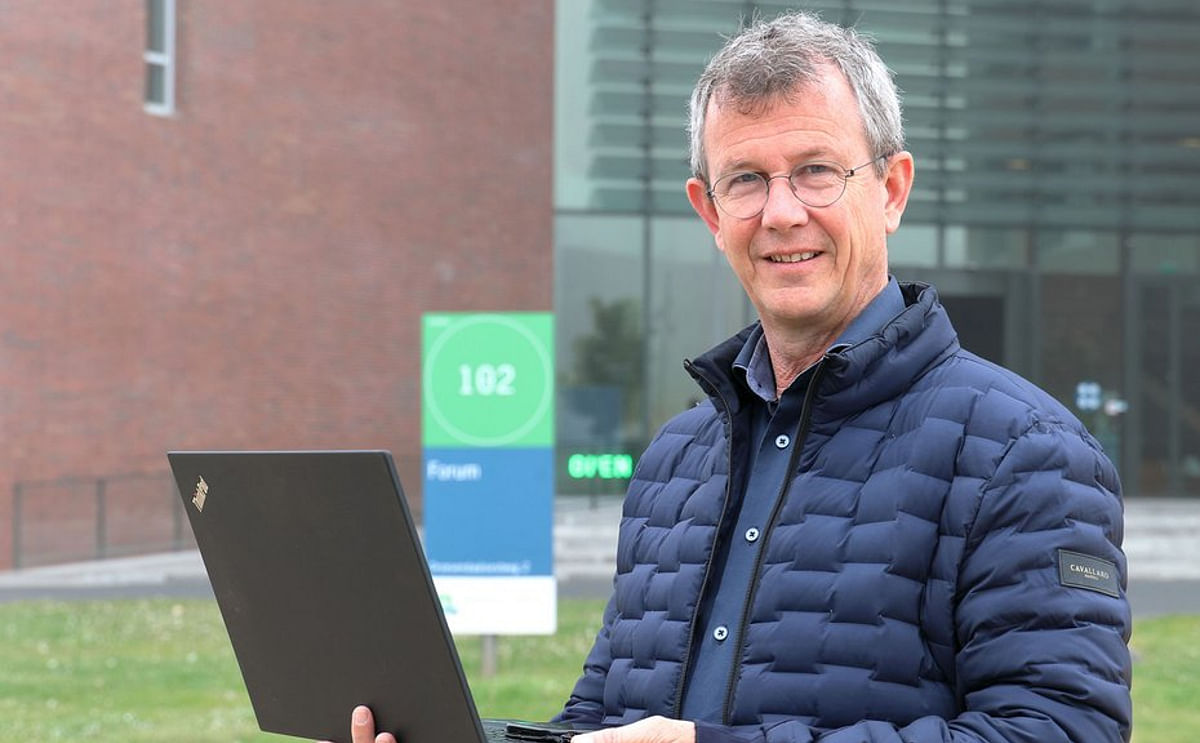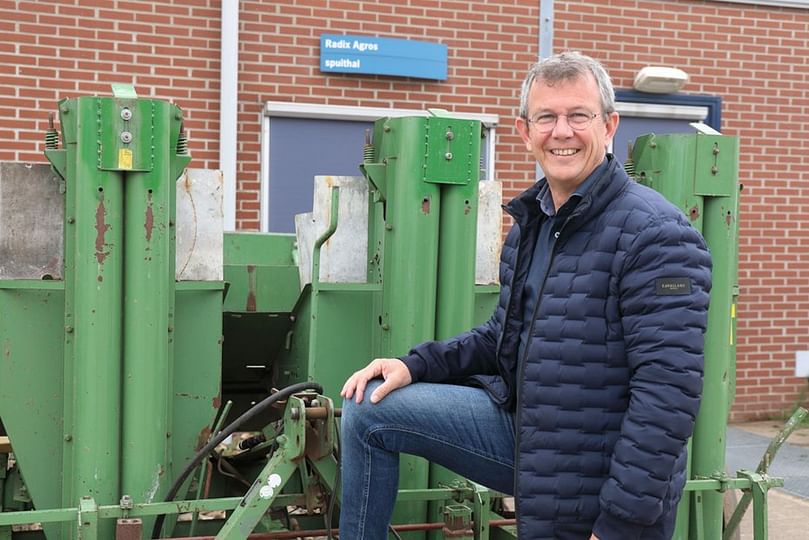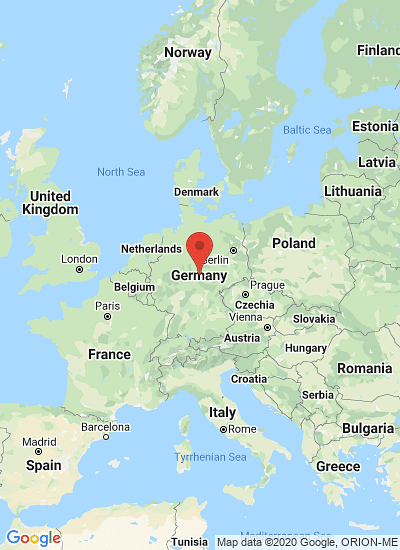Corné Kempenaar of Wageningen University & Research (WUR)
Grip on own data brings benefits of precision farming to the potato grower

Much is expected from precision farming both inside and outside the potato sector. The term is often mentioned in the same breath as a sustainable future for potato cultivation. But precision farming is more than a future perspective.
It’s being researched, experimented with and innovated around the world. Several growers have also been using precision techniques for some time now. Dr Corné Kempenaar of Wageningen University & Research (WUR) already did his first haulm-killing test in 1999 to make decision rules for Variable Rate Applications (VRA).
As a senior researcher in precision farming, he is the right man to interpret the current status of precision farming and where it will lead the sector.
Corné Kempenaar:
Corné Kempenaar:
Corné Kempenaar:
Corné Kempenaar:
Corné Kempenaar:
Corné Kempenaar:
 What role will precision farming play as a management system?
What role will precision farming play as a management system?
Corné Kempenaar:
Corné Kempenaar:
Corné Kempenaar:
Corné Kempenaar:
Corné Kempenaar:
Corné Kempenaar:
Corné Kempenaar:
Corné Kempenaar:
Corné Kempenaar:
It’s being researched, experimented with and innovated around the world. Several growers have also been using precision techniques for some time now. Dr Corné Kempenaar of Wageningen University & Research (WUR) already did his first haulm-killing test in 1999 to make decision rules for Variable Rate Applications (VRA).
As a senior researcher in precision farming, he is the right man to interpret the current status of precision farming and where it will lead the sector.
Corné Kempenaar:
"When the grower is in charge of his own data, he has the power to make the customer pay extra for more environmentally-friendly grown potato cultivation."To start at the beginning, could you, please, explain what precision farming is exactly?
Corné Kempenaar:
"I call it a management concept. As a grower, you want to focus on the variation within your business. With the advent of geographic information systems (GIS) around 2010, it became possible to focus on spatial variation, for which a lot of applications have now been developed. In precision farming, you try to do everything as precisely as possible."How has precision farming been further developed in practice since its start?.
"You can apply that concept for one decision for your farm, but then it won't yield so much money or added value. You should really apply it for all your cultivation decisions. Precision farming is more than just technology. lt's not just about the operational matters that are currently receiving a lot of attention, such as variable dosing."
"lt can also be a strategic decision. For example, making wise choices when you want to implement a different cropping plan. You can make that choice based on feeling, or will you let your data speak. More and more data is becoming available, so we are moving towards a more data-driven farming."
Corné Kempenaar:
"The rise of precision farming 1.0 roughly coincides with GPS becoming affordable, which was around 2005, when farmers suddenly started buying the technology. lt made your work more fun and you were a lot less tired. Financially it was still a bit difficult, although there were quite a few advantages."What does the use of precision farming really bring the grower?
"From around 2014, or maybe even earlier, you can speak of precision farming 2.0. Then all kinds of new things became available: satellite images, drone images, GIS packages, yield monitoring, smarter spreaders and planting and sowing machines."
"And data became available. That's when you saw the first variable dosage applications. Before the arrival of satellite imagery, a few companies worked with sensors, and you could already see task maps emerging. That has also been a trigger for some farmers to start with an application like that."
"There are three things that must be in order for each precision application: the data, the advice based on those data (decision rules) and, in operational management, a "smart" machine that can carry out the implementation on the basis of that advice. The link between these three factors is often ICTrelated, which can sometimes slow things down."
"For example, there were parties that offered satellite images and said: 'and how you want to work with it is up to you, for example, whether and what dosage of fertiliser or crop protection you apply.' The early adopters were fine with that, they were perfectly happy with making their own decisions. But the majority of farmers, I think more than 90 percent, thought such an image without any advice was nice to know, but didn't have a lot of added value."
Corné Kempenaar:
"In the National Field Lab for Precision Farming project (NPPL in Dutch), a group of thirty farmers apply precision farming using their current mechanisation schemes, available data and various decision rules. In the evaluation report of the first phase, you can see that, compared to what they did before, they save on average 20 to 30 percent on input."Are the advantages of precision farming not so much for the grower?
"These growers were already a bit ahead, and by responding to this spatial variation, an additional percentage of savings will be made. What you also see is that the extra time they put into precision farming, or the costs they incur for it, are often just as great as the savings on input. For example, if you could save 25 percent on a relatively cheap product like Reglone, that would come down to a saving of EUR 20 (about USD 19.9) per hectare."
"A satellite image costs about EUR 1 (about USD 1), but a drone image costs as much as EUR 20 (about USD 19.9). So financially it was not an interesting case, but for the environment, of course, it was. The NPPL project has thus made it clear to the government that it's not all that great. In fact, the businesses around it have earned more from precision farming than the farmers themselves."
Corné Kempenaar:
"Not yet, but I think it will shift when farmers get a better grip on the data generated on their farms and when they can share it themselves. A processor can now demand that the data be supplied with the product, without paying an extra cent for it."What needs to be done to facilitate that shift?
"When the grower is in charge of his own data, he has the power to make the customer pay extra for more environmentally-friendly potato cultivation. I expect that the control will shift towards the farms in the near future."
Corné Kempenaar:
"If there are data platforms at all, they are often provided by companies with a different revenue model. If I were an organisation like the Organisation for Agriculture & Horticulture (LTO) or the Trade Organisation for Arable Farming (BO Akkerbouw), I would make sure that I got my hands on such a data platform, that I was in charge of it, or at least would be on its board."
"These parties are now considering whether they will organise this, for example within the Public-private partnerships (PPP) Precision Farming 4.0 and a recently established project group. lt's expected that farmers will become more data-driven when the technical and organisational bottlenecks around data use are resolved."
"As a result, precision farming applications will become more widespread and accountability for cultivation practices with your own data can also be initiated. A grip on data is then a must."

Corne Kempenaar (WURJ) - The manufacturers are certainly putting the brakes on the use of preci-sion farming. They're trying to protect their own niche, they have no need whatsoever to allow data registered under one brand to flow throu-gh to another. That can and should all be done better
Corné Kempenaar:
"As a grower, you can use it to demonstrate why you are doing something in a more science-based way. On the WUR data platform Farmmaps, for example, a nitrogen fertiliser module is available, which, on the basis of sensor data and additional data (such as planting date and measuring date), can create an advisory map for nitrogen fertiliser applications."Will products in the future be allowed with the requirement that they must be demonstrably applied with precision technology?
"A farmer can indicate that he is working on the basis of recognised science, and that his yield will be less if he doesn't follow that advice. In addition, a number of chemical crop protection agents are at risk."
"If you can show with precision techniques that you're staying within the norms, you may be able to keep certain products available. For a number of doubtful products, you could already save 30 percent with the current technology."
Corné Kempenaar:
"I think that in the future there will be closed-loop spraying, whereby the sprayer registers exactly where and what has been done. The command is placed at the start: you can apply this quantity here, you’re not allowed to spray anything there."At what point is precision farming in the potato sector at the moment?
"Subsequently, the government needs to have proof and, in doing this, they must be confident that the registration that’s shown in the farm management system is correct."
"This can be done, for example, by using Farmmaps or other platforms that comply with the Data Use Code of Conduct. From there, the farmer can share that data, which is confidential and safe in the system, with the Netherlands Enterprise Agency (RVO)."
Corné Kempenaar:
"It’s certainly not a revolution, but I do think that working in a data-driven way is becoming increasingly important for the potato sector too. Growers are increasingly having to explain why they’re doing something, and that’s a strong incentive."These suppliers play an important role in strengthening the chain. As you’ve pointed out, precision farming may become a license to produce, whereby the recording of data and the registration of applications leaves a stamp on a grower’s crop. What do you think needs to change to improve this situation?
"There will be some kind of balance, eventually. Everyone would like to work without using chemicals, but that’s not yet possible for the cultivation of potatoes. Look at last summer, you can be strongly against chemicals but, in fact, organic potato cultivation last season was a total failure."
"If we’d been dependent on that, we might have imported more potatoes, and there’s a lot still to be discussed about that too. As far as the industry around the potato sector is concerned, you see that suppliers still don’t collaborate enough. In the end, they all still use ICT, precision farming and smart machines to improve their own patch, not to make cultivation easier."
Corné Kempenaar:
"I think that as a farmer you should simply have access to the data generated on your farm. A tractor driving across the field measures a thousand things, but the grower simply cannot access most of that data. In the small print, for example, the tractor manufacturer says clearly: ‘the data is ours, and if you want any of it, you’ll have to pay."Does the business sector in this sense inhibit the further development and use of precision farming?
"Whereas, morally-speaking, that’s a bit strange. It’s fine that you don’t get the neighbour’s data. But what’s been produced within your own farm boundaries should be accessible to you. Take, for example, the fuel used by a tractor, farmers will increasingly have to account for their energy usage."
"If you do measure usage, make sure that the grower has that data. No complicated hassle, such as charging a cent per litre for this information."
Corné Kempenaar:
"The manufacturers are certainly putting the brakes on the use of precision farming. They’re trying to protect their own niche, they have no need whatsoever to allow data registered under one brand to flow through to another.That can and should all be done better."Would you say that if there’s no collaboration, precision farming will never be a success?
"To be honest, I also think that the consultative role could be better. The consultants who go to farmers are often not really keen that farmers take on that role."
"They prefer a grower to be dependent. I talk to a lot of parties, and in the end, I just see each party busy with their own revenue model, while precision farming is all about integrating things, about working together."
Corné Kempenaar:
"Yes. The ecosystem in the Netherlands is quite complicated, it’s completely fragmented. For example, we’ve been saying for about five years now that a new analysis technology, using artificial intelligence, will be the solution for weed control."What needs to be done for growers to permanently make the switch to precision farming?
"But all those start-ups working on it are just too small to collect and annotate enough photos. As a result, no one can really make good algorithms for detection. We in the Netherlands have become bad at choosing major innovation processes, and that’s what you see happening now. In 2014, for example, the marketing boards came to a standstill. If, when the GIS platforms came up, they had started a development like Farmmaps themselves, you wouldn’t have had all those fiery discussions about data ownership now."
"On the other hand, over time, you see that some progress is being made. Now that fertiliser is suddenly becoming so much more expensive, for example, farmers are suddenly starting to think about the variable dosing of fertiliser."
Corné Kempenaar:
"You need to cross a certain threshold to overcome your doubt. Farmers with a certain farm size can make that investment. They can also try to get somebody who’s free to work their way through the complex ICT. But the majority of the growers are still a bit hesitant. Although interest in variable dosing has increased."What role can Farmmaps play for precision farming in the potato sector?
"Meanwhile, a quarter of Dutch arable farmers are saying ‘wow, this is really interesting’. Some of them don’t immediately use all the possibilities, but choose to apply less nitrogen on half of a field, for example, because they know that there’s less need for it there."
Corné Kempenaar:
"With all kinds of applications that offer added value, Farmmaps may well be the next step for precision farming in the potato sector. The platform provides growers with information on weed control, disease control, fertilisation, irrigation and so on. These are all matters that are becoming increasingly important."What do you think potato cultivation will look like in 2040?
"A few years ago, I spoke to a farmer from North America who grows 'easy' crops such as maize, soybeans and wheat. For all those crops, harvesters are available that measure the yield spot by spot. Such a grower therefore knows the yield potential of all 20,000 hectares that he owns, of each plot, on a scale, for example, of 100 by 100 metres."
"He also knows what he uses on his land in terms of fertilisation and irrigation. With that, he develops his own knowledge. The Netherlands is so much smaller in this respect and, in addition, measuring yields for potatoes is rather difficult."
"But that, too, may well change soon. As the WUR, we are involved in monitoring the number and size of the tubers on the harvesting machine at a certain location. Those are great numbers to optimise on, or to put in such an advisory system."
Corné Kempenaar:
"In 2040, potato cultivation will combine the best of both worlds: technology and agro-ecology. Potato production will be less extensive, certainly in Western Europe. There will be more scope for biodiversity, at least in Dutch agriculture. People here will have to show that a certain percentage of space within a farm is given to landscape elements and nature."
"On the other hand, the development of technology is also certain to continue. Potatoes will still be grown in ridges, but there will be a number of robot applications, such as weed and disease recognition, maybe some virus recognition as well."
"I see pluses and minuses for fixed tractor paths. The harvesting is always a problem with this and if that’s not solved, the added value for fixed tractor paths will not come easily either. As far as strip cultivation is concerned, I see that it can contribute to the objective of both the Dutch government and Europe for more biodiversity on plots."
"I see pluses and minuses for fixed tractor paths. The harvesting is always a problem with this and if that’s not solved, the added value for fixed tractor paths will not come easily either. As far as strip cultivation is concerned, I see that it can contribute to the objective of both the Dutch government and Europe for more biodiversity on plots."
"But it’s more expensive to carry out, so I don’t think we’ll make it in terms of financial returns with strip cultivation. I see opportunities for this form of diversity on a plot purely and only when a farmer is rewarded for biodiversity on his farm. In short, I don’t think that a completely new cultivation system will have been introduced in 2040."
"In the next eighteen years, I expect an optimisation of the current cultivation system for potato cultivation and a further development of existing techniques, supplemented by new techniques and a smart space for biodiversity."
¿Te gustaría recibir noticias como esta por correo electrónico? ¡Únete y suscríbete!
Get the latest potato industry news straight to your WhatsApp. Join the PotatoPro WhatsApp Community!
Empresa Destacada
Contenido Patrocinado
Contenido Patrocinado
Eventos Relacionados
Contenido Patrocinado
Contenido Patrocinado







